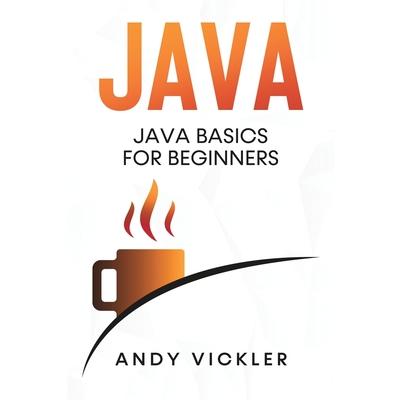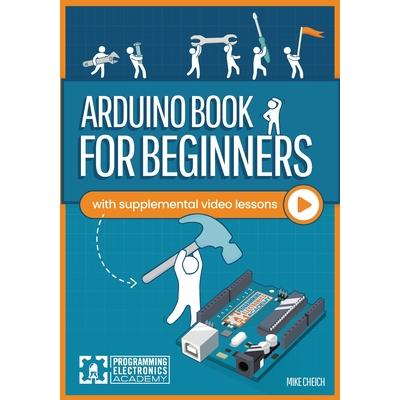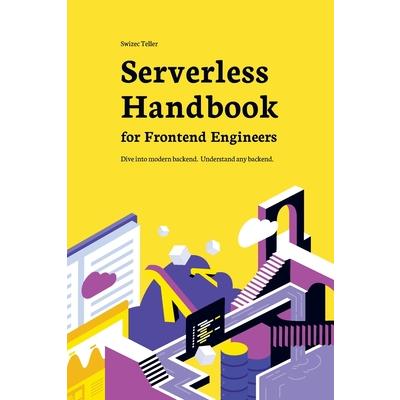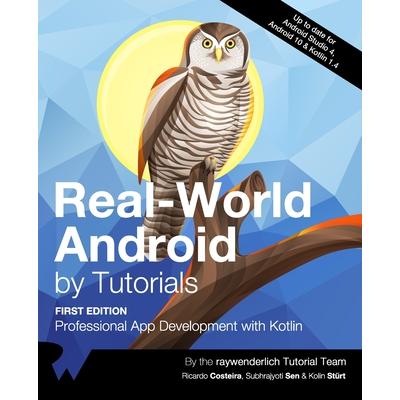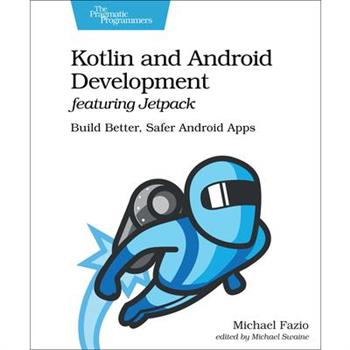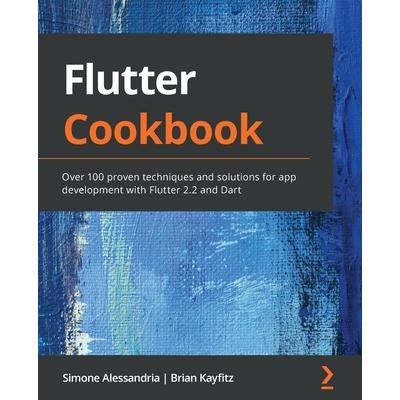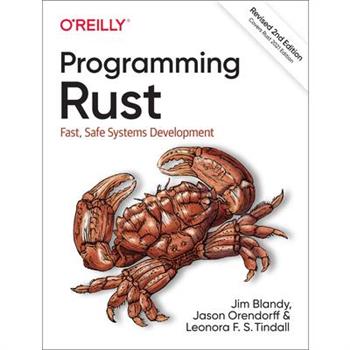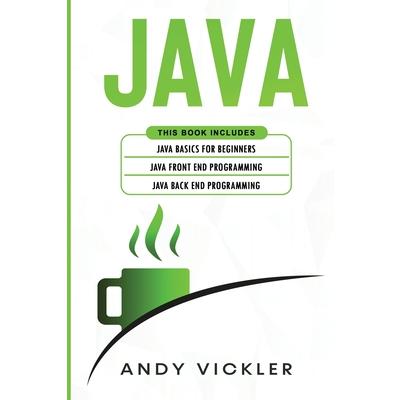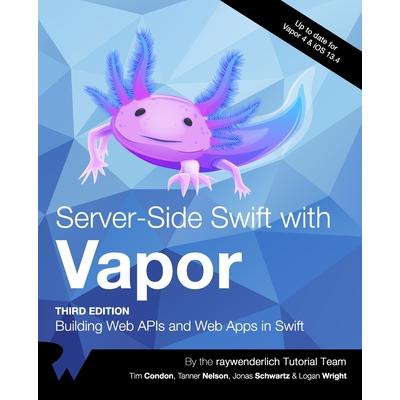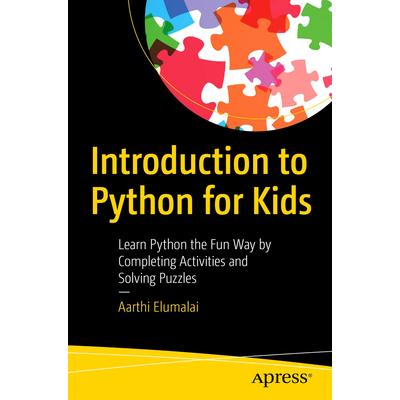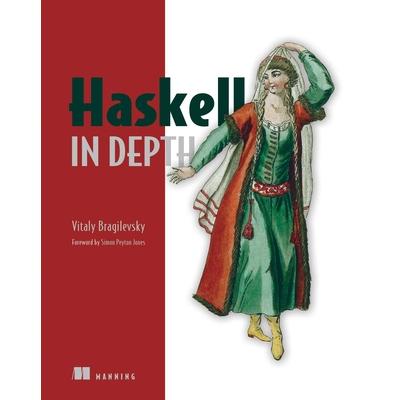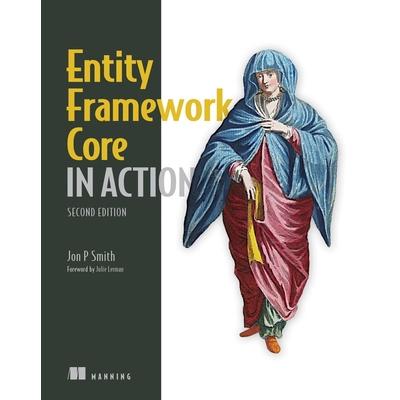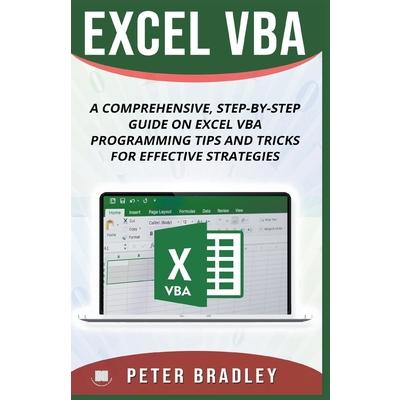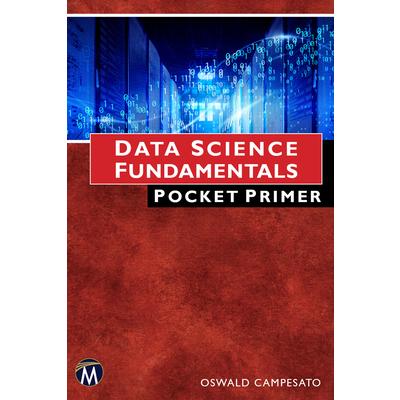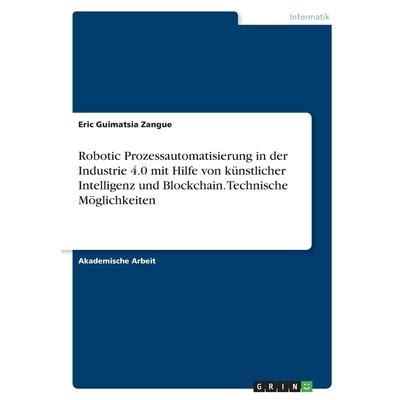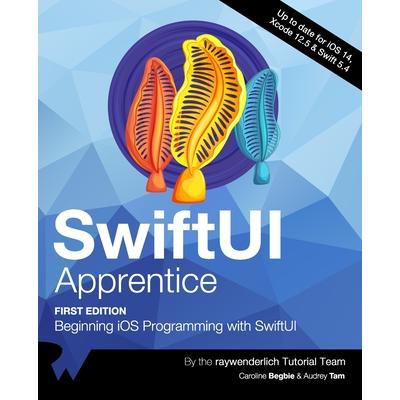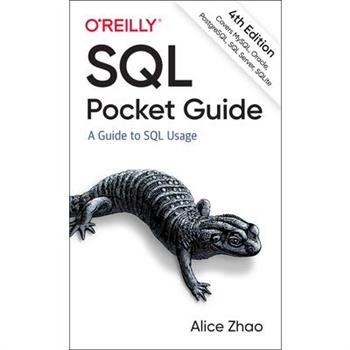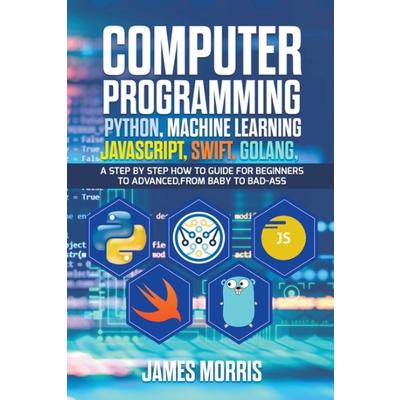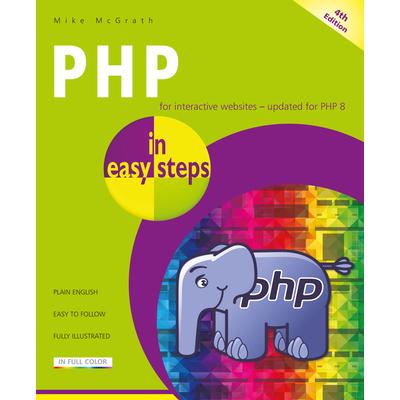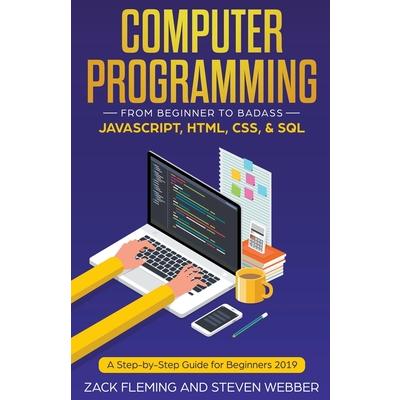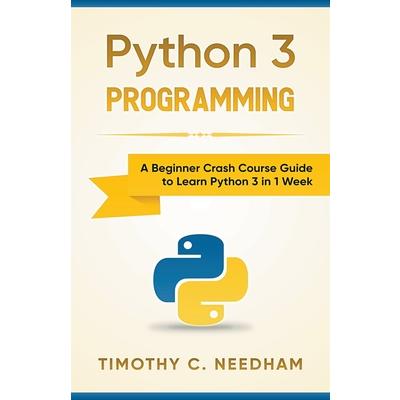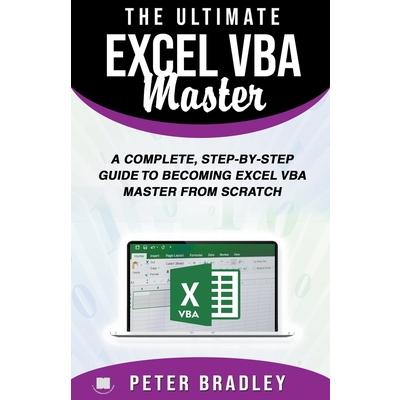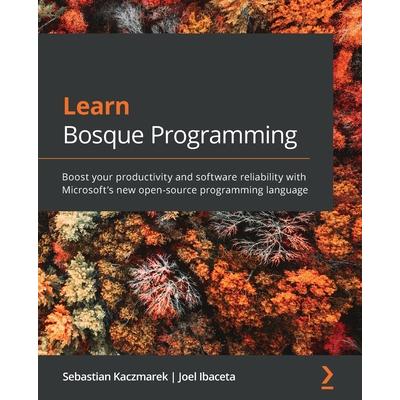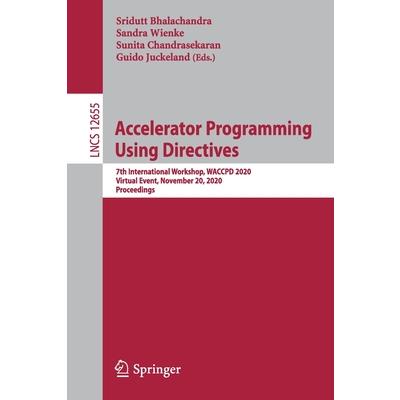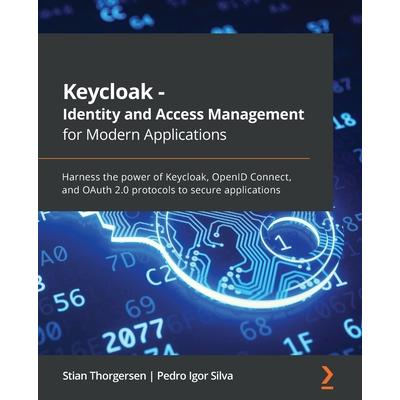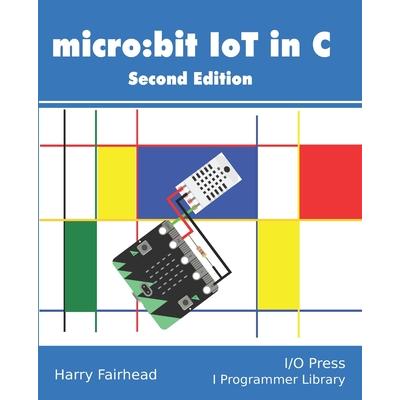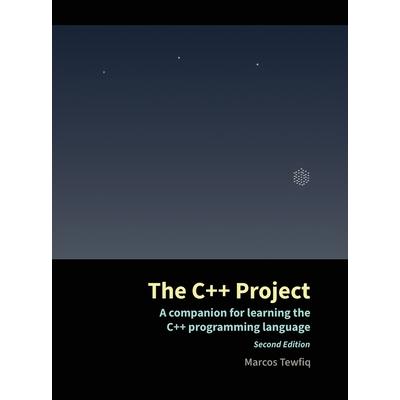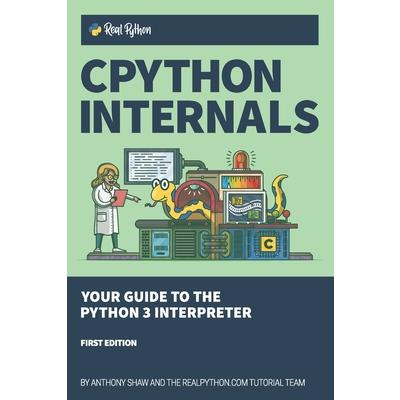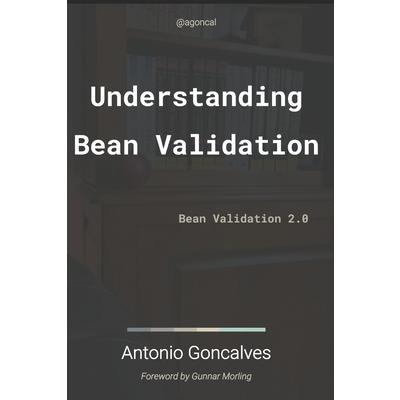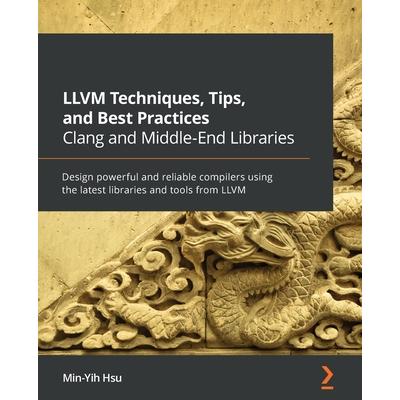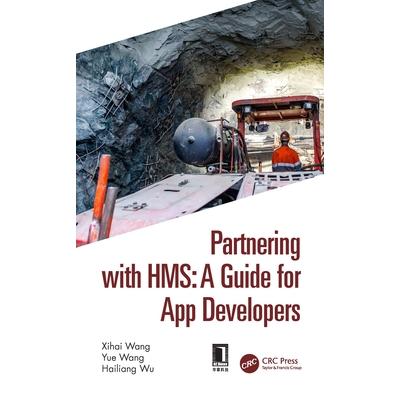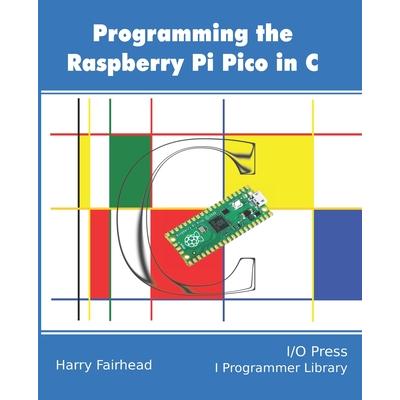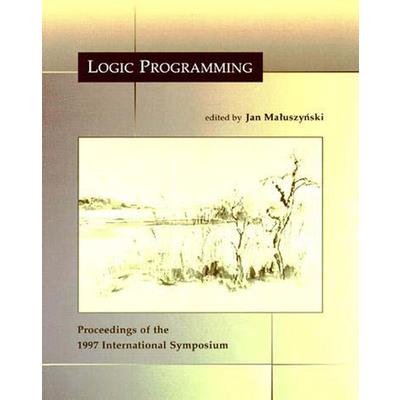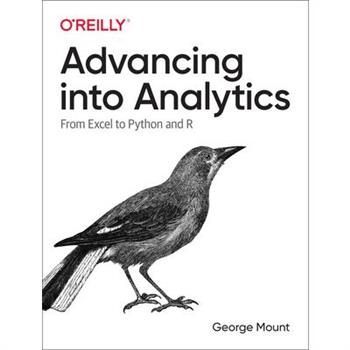Java
Simplicity sets this book apart from all the others. This book contains proven strategies to learn Java programming in a short time. The market is replete with Java books, but the problem is that they are written in a complex and difficult to understand manner. In this book, you'll be able to easily understand each line of code with added explanations and comments for each code.Java is not a scripted language, it's a compiled language and it can be difficult to learn. You can't navigate through the codes of Java until you download and install Java Development Kit. You also need to make sure that the best compiler has been downloaded and installed on your computer system. This book will teach you everything you need to know!This book contains step-by-step code samples and explanations so that you can learn the basics. In this book you'll find details on...Java Installation of Java Development Kit and compilersIntroduction to Java programmingData types in Java Java Strings Java OperatorsJava ArrayListsJava LinkedListsJava HashMapJava ConditionalsJava LoopsJava MethodsJava StreamsJava ClassesJava Inner & Inherited ClassesJava ModifiersJava Object-Oriented ProgrammingJava Date & TimeJava InterfacesJava program is a much needed and profitable skill to have. If you've always dreamed of learning Java but didn't know where to get started, then this is the book for you. Click the Buy Now button to learn the basics of Java programming today!
Arduino Book for Beginners
The Arduino platform is great because it allows anyone with a desire to build awesome things the ability to easily create a prototype using a subset of C and C++ programming and specific Arduino functions.The Arduino Book for Beginners is a tutorial style collection of lessons designed to be simple and easy to follow which uses only the most relevant circuits and programs and assumes nothing about your prior electronics or programming experience.The book also comes with access to over 15 supplemental video lessons to help drive home concepts. These supplemental video lessons are pulled from training at Programming Electronics Academy, the premiere online training website for learning to program Arduino.What you will Learn: How to program your Arduino...from variables to arrays, for loops and if statementsHow to make your Arduino respond to sensorsHow to communicate to your computer with the ArduinoHow to build teleporters, levitating fortresses and nuclear reactors (maybe a stretch...)This book covers the most useful, enlightening and simplest examples to get you started on the road to hacking just about anything.What to Expect: Step-by-step instructions to walk you through building circuits and programming your ArduinoEach line of code in the programs are discussed to maximize your understanding of the fundamentalsRepetition of the basic programming building blocks are used to increase your retention of the materialOnly a handful of additional parts are necessary to complete the course lessons, many of which are reused from lesson to lesson, reducing your investment in learning how to use ArduinoThe simple building blocks you learn will be put together to build more complex examplesGet Started Now: There is no better time to jump in then now! The Arduino community is vibrant and growing.
Serverless Handbook
Serverless Handbook for frontend engineers is the resource I wish I had jumping into serverless. A guide borne of experience and pain.No academic bullshit where you're not sure if the author ever used this stuff in production. I have. From baby side-projects to high traffic data processing monsters.As Google likes to say: serverless architectures, ]from prototype to production to planet-scaleHere's what early readers had to say. - Serverless Handbook taught me high-leveled topics. I don't like specific courses with source code (unless it's the exactly thing I want to build) but these chapters helped me to feel like i'm not a total noob anymore. The hand-drawn diagrams and high-leveled descriptions gave me the feeling that i don't have any critical "knowledge gaps" anymore- I'm using these skills on some serverless projects in a dayjob. Also very convenient to use with my side projects.- The code examples! I like that you included a lot of code examples. It sparked my interest in serverless. Since reading the book I've taken a few courses/workshops in serverless but this was the book that started the serverless journey for me. Can't wait to build a micro SaaS app with my friendsServerless Handbook takes you from backend beginner to solid full-stack engineer. It shows you the mindsets and tactics to use with any backend. It talks about distributed data processing, designing a REST API, how to build GraphQL, handling authentication, and keeping your code secure.Every chapter helps you choose what to do. Because your project is unique and understanding beats cookie-cutter recipes. This book is a why, not a how. But there's enough how to start you off: )Serverless Handbook is everything I wish I knew about backend programming 10 years ago.
Auswertung von Fu?balldaten mit der Software ”R”. Der Pearson Chi-Quadrat-Test
Studienarbeit aus dem Jahr 2020 im Fachbereich Informatik - Wirtschaftsinformatik, Note: 1,7, FOM Essen, Hochschule f羹r Oekonomie & Management gemeinn羹tzige GmbH, Hochschulleitung Essen fr羹her Fachhochschule, Sprache: Deutsch, Abstract: Diese Seminararbeit besch瓣ftigt sich mit der Analyse von Fu?balldaten mit Hilfe von R, einer Software f羹r statistische Datenverarbeitung. F羹r die Bearbeitung und Auswertung der Daten wurden vier Datens瓣tze zu Grunde gelegt. Diese bestehen aus den Ergebnissen aller Spiele der Bundesliga, der Premier League, der La Liga und der Ligue 1 in der vergangen Spielzeit 2018/2019. Mit den gesammelten Daten soll ein Chi-Quadrat Test durchgef羹hrt und die Nullhypothese untersucht werden. Diese besagt, dass zwischen den Variablen "Ergebnis" und "Land" kein Zusammenhang besteht. Sofern die Nullhypothese abgelehnt werden kann und eine Abh瓣ngigkeit zu erkennen ist, soll die St瓣rke des Zusammenhangs definiert werden. Abschlie?end gilt es, eventuelle Auff瓣lligkeiten zwischen den L瓣ndern und den Spielergebnissen aufzudecken und zu untersuchen, ob in den verschiedenen Ligen ein Heimvorteil ersichtlich ist.
Real-World Android by Tutorials (First Edition)
Real-World Android by Tutorials guides you through building one professional Android app using the most important architectures and libraries. Along the way, you'll get a solid foundation in Android development concepts so you can make informed decisions about how to apply them in your own codebase.Learn how to implement a real-world Android appWhen developing a professional Android app, there are hundreds of options for libraries and possible architectures. Finding documentation is easy, but you might end up with an app structure that isn't ideal for your project.Real-World Android by Tutorials helps you implement a real-world app from scratch, addressing critical problems like finding the right architecture, making the UI responsive and appealing and implementing efficient animations.Who this book is forThis book is for intermediate Android developers who already know the basics of the Android platform and the Kotlin language, and who are looking to build modern and professional apps using the most important libraries. If you want to create a reactive and good-looking UI and are determined not to ignore important aspects like security, this book will help.Topics covered in Real-World Android by TutorialsBy reading this book, you'll learn about the following topics: Choosing the right architecture Pick the right app architecture to achieve a good separation between domain and data layers, making your app easy to build and maintain.Building features Learn how to structure your code to make it more testable.Modularization Split your code into different modules, improving the build time and reusability of your code.Animations Use the new Motion Editor to implement animations that make your app's UI more appealing.Custom Views Go beyond the basics by creating a View that's specific to your app's needs.Security Protect your app's data and code.Tooling Mastering the right tool is a fundamental skill when creating a professional app. Learn how to use the tools to analyze your code and fix some tricky bugs.One thing you can count on: After reading this book, you'll be prepared to implement your own, professional Android app.
Digitale Medien - Fluch oder Segen? Auswirkungen von digitalen Medien auf verschiedene Lebensbereiche des Menschen
Studienarbeit aus dem Jahr 2020 im Fachbereich Informatik - Wirtschaftsinformatik, Note: 1,3, FOM Hochschule f羹r Oekonomie & Management Hannover, Veranstaltung: Interdisziplin瓣re Aspekte der Wirtschaftsinformatik, Sprache: Deutsch, Abstract: Diese Seminararbeit behandelt die folgenden Forschungsfragen: Welche Lebensbereiche eines Menschen werden wie durch digitale Medien beeinflusst? Sind digitale Medien ein Fluch oder Segen? F羹r das Erzielen des erstrebten Forschungsergebnisses werden zun瓣chst die theoretischen Grundlagen 羹ber digitale Medien und dem Lifebalance Modell nach Dr. Peseschkian erl瓣utert. Die theoretischen Grundlagen umfassen eine Abgrenzung der Begriffe "digitale Medien" und "Lifebalance", wobei auch der Aufbau des Lifebalance Modells behandelt wird. Nach einer einf羹hrenden Vorstellung der Vorgehensweise bei der Datenerhebung wird im Rahmen einer empirischen Studie eine Analyse zur Bedeutung digitaler Medien in der heutigen Lebenswelt hinsichtlich der Nutzungsgewohnheiten durchgef羹hrt. Auf Basis der aus der empirischen Studie ermittelten Informationen werden die Auswirkungen auf die Lebensbereiche des Menschen anhand des Lifebalance Modells nach Dr. Peseschkian dargelegt. Mittels der konstatierten Ergebnisse werden die Forschungsfragen beantwortet. Das Fazit wird den Abschluss dieser Ausarbeitung darstellen und das Gesamtergebnis aufzeigen. Die t瓣gliche Nutzung von Smartphones, die zunehmende Begeisterung von Menschen f羹r Online-Dienste und die damit verbundene Konfrontation mit diversen Informationen innerhalb sozialer Netzwerke stehen exemplarisch f羹r einige Gegebenheiten, die in der heutigen Gesellschaft zu beobachten sind. Die dadurch implizierte Weiterentwicklung der Informationsgesellschaft hat die Notwendigkeit einer kritischen Betrachtung von digitalen Medien stark an Bedeutung gewinnen lassen, sodass in der heutigen Zeit eine vorhandene Medienkompetenz zur Hinterfragung der Potenziale und Anwendungsm繹glichkeiten digitaler Medien erforderlich
Wann sollte ein Unternehmen seine Betriebssysteme aktualisieren?
Essay aus dem Jahr 2021 im Fachbereich Informatik - Allgemeines, Note: 1,3, FOM Essen, Hochschule f羹r Oekonomie & Management gemeinn羹tzige GmbH, Hochschulleitung Essen fr羹her Fachhochschule, Sprache: Deutsch, Abstract: Die vorliegende Arbeit geht der Frage nach, welche Voraussetzungen erf羹llt werden m羹ssen, damit sich ein Unternehmen f羹r ein bestimmtes Betriebssystem f羹r seine Rechner entscheidet und wann diese aktualisiert werden sollten. In dieser Arbeit liegt der Fokus dabei auf den Betriebssystemen des Unternehmens Microsoft. Das Ziel ist es, Aufschluss dar羹ber zu geben, welche Faktoren die Auswahl des Betriebssystems im Unternehmenskontext ma?geblich beeinflussen. Die im Jahr 2017 durchgef羹hrte Studie "Betriebssystem f羹r F羹hrung und Zusammenarbeit" des Unternehmens Coverdale zeigt, dass 65% der Befragten einen Handlungsbedarf beim eingesetzten Betriebssystem in ihren Unternehmen erkennen. Der erste Teil des wissenschaftlichen Essays liefert Definitionen f羹r die im Rahmen dieser Seminararbeit verwendeten Fachbegriffe. Im weiteren Verlauf werden die Aufgaben eines Betriebssystems hervorgehoben. Das vierte Kapitel widmet sich dem Status Quo und bezieht Studien mit ein. Anschlie?end werden die wichtigsten Inhalte im Fazit zusammengefasst und die Forschungsfrage beantwortet. Der Fokus des wissenschaftlichen Essays liegt auf Betriebssystemen f羹r den PC.
Blazor WebAssembly by Example
Discover blueprints that explore various components of Blazor, C#, and .NET to help you build web apps without learning JavaScriptKey Features: Explore complete, easy-to-follow web projects using BlazorBuild projects such as a weather app, expense tracker, and Kanban board with real-world applicationsUnderstand and work with Blazor WebAssembly effectively without spending too much time focusing on the theoryBook Description: Blazor WebAssembly makes it possible to run C# code on the browser instead of having to use JavaScript, and does not rely on plugins or add-ons. The only technical requirement for using Blazor WebAssembly is a browser that supports WebAssembly, which, as of today, all modern browsers do. Blazor WebAssembly by Example is a project-based guide for learning how to build single-page web applications using the Blazor WebAssembly framework. This book emphasizes the practical over the theoretical by providing detailed step-by-step instructions for each project.You'll start by building simple standalone web applications and progress to developing more advanced hosted web applications with SQL Server backends. Each project covers a different aspect of the Blazor WebAssembly ecosystem, such as Razor components, JavaScript interop, event handling, application state, and dependency injection. The book is designed in such a way that you can complete the projects in any order.By the end of this book, you will have experience building a wide variety of single-page web applications with .NET, Blazor WebAssembly, and C#.What You Will Learn: Discover the power of the C# language for both server-side and client-side web developmentUse the Blazor WebAssembly App project template to build your first Blazor WebAssembly applicationUse templated components and the Razor class library to build and share a modal dialog boxUnderstand how to use JavaScript with Blazor WebAssemblyBuild a progressive web app (PWA) to enable native app-like performance and speedUnderstand dependency injection (DI) in .NET to build a shopping cart appGet to grips with .NET Web APIs by building a task manager appWho this book is for: This book is for .NET web developers who are tired of constantly learning new JavaScript frameworks and wish to write web applications using Blazor WebAssembly, leveraging the power of .NET and C#. The book assumes beginner-level knowledge of the C# language, .NET framework, Microsoft Visual Studio, and web development concepts.
Clean C++20
Aims to be first book with unique approach on "clean" C++ coding to marketFirst book on C++ design patterns and best practices in a while to marketDay and date asap after C++ 17 release in 2017C++ is fairly relevant meme in terms of ebooks database revenue.
Financial Theory with Python
Nowadays, finance, mathematics, and programming are intrinsically linked. This book provides the relevant foundations of each discipline to give you the major tools you need to get started in the world of computational finance. Using an approach where mathematical concepts provide the common background against which financial ideas and programming techniques are learned, this practical guide teaches you the basics of financial economics. Written by the best-selling author of Python for Finance, Yves Hilpisch, Financial Theory with Python explains financial, mathematical, and Python programming concepts in an integrative manner so that the interdisciplinary concepts reinforce each other. Draw upon mathematics to learn the foundations of financial theory and Python programming Learn about financial theory, financial data modeling, and the use of Python for computational finance Leverage simple economic models to better understand basic notions of finance and Python programming concepts Use both static and dynamic financial modeling to address fundamental problems in finance, such as pricing, decision-making, equilibrium, and asset allocation Learn the basics of Python packages useful for financial modeling, such as NumPy, pandas, Matplotlib, and SymPy
Kotlin and Android Development Featuring Jetpack
Start building native Android apps the modern way in Kotlin with Jetpack's expansive set of tools, libraries, and best practices. Learn how to create efficient, resilient views with Fragments and share data between the views with ViewModels. Use Room to persist valuable data quickly, and avoid NullPointerExceptions and Java's verbose expressions with Kotlin. You can even handle asynchronous web service calls elegantly with Kotlin coroutines. Achieve all of this and much more while building two full-featured apps, following detailed, step-by-step instructions. With Kotlin and Jetpack, Android development is now smoother and more enjoyable than ever before. Dive right in by developing two complete Android apps. With the first app, Penny Drop, you create a full game complete with random die rolls, customizable rules, and AI opponents. Build lightweight Fragment views with data binding, quickly and safely update data with ViewModel classes, and handle all app navigation in a single location. Use Kotlin with Android-specific Kotlin extensions to efficiently write null-safe code without all the normal boilerplate required for pre-Jetpack + Kotlin apps. Persist and retrieve data as full objects with the Room library, then display that data with ViewModels and list records in a RecyclerView. Next, you create the official app for the Android Baseball League. It's a fake league but a real app, where you use what you learn in Penny Drop and build up from there. Navigate all over the app via a Navigation Drawer, including specific locations via Android App Links. Handle asynchronous and web service calls with Kotlin Coroutines, display that data smoothly with the Paging library, and send notifications to a user's phone from your app. Come build Android apps the modern way with Kotlin and Jetpack! What You Need: You'll need the Android SDK, a text editor, and either a real Android device or emulator for testing. While not strictly required, it's assumed you're using Android Studio, which comes with the Android SDK and simplifies creating an emulator. Also, a few examples require JDK 1.8 or later, though all of these pieces can be completed in other ways when using JDK 1.6.
Securing Mobile Devices and Technology
This book describes the detailed concepts of mobile security. The first two chapters provide a deeper perspective on communication networks, while the rest of the book focuses on different aspects of mobile security, wireless networks, and cellular networks. This book also explores issues of mobiles, IoT (Internet of Things) devices for shopping and password management, and threats related to these devices. A few chapters are fully dedicated to the cellular technology wireless network. The management of password for the mobile with the modern technologies that helps on how to create and manage passwords more effectively is also described in full detail. This book also covers aspects of wireless networks and their security mechanisms. The details of the routers and the most commonly used Wi-Fi routers are provided with some step-by-step procedures to configure and secure them more efficiently. This book will offer great benefits to the students of graduate and undergraduate classes, researchers, and also practitioners.
Flutter Cookbook
Discover how to build, scale, and debug native iOS and Android applications from a single codebase using the Dart programming language Key Features: Quickly build and iterate on your user interface (UI) with hot reloadFix bugs and prevent them from reappearing using Flutter's developer tools and test suitesDiscover practical recipes for building mobile applications with FlutterBook Description: Flutter is an open-source framework for building mobile, web, and desktop apps using the Dart language. With this recipe-based guide, which focuses on robust app design and core principles, you'll learn how to solve cross-platform development issues in a practical way.The Flutter Cookbook covers error handling and debugging to ensure that your apps run more efficiently. You'll start by setting up Flutter and customizing your development environment. The book will explain the main tasks involved in app development, such as user interface and user experience (UI/UX) design, API design, and creating animations. Later chapters get you up to speed with routing, retrieving data from web services, and persisting data locally. A dedicated section also focuses on Firebase and its machine learning capabilities. The last chapter is specifically designed to help you create apps for the web and desktop (Windows, Mac, and Linux). Throughout the book, you'll find recipes that cover the most important features needed to build a cross-platform application, along with insights into running a single codebase on different platforms.By the end of this Flutter book, you'll have learned everything you need to be able to write and deliver fully functional apps.What You Will Learn: Use Dart programming to customize your Flutter applicationsDiscover how to develop and think like a Dart programmerLeverage Firebase Machine Learning capabilities to create intelligent appsCreate reusable architecture that can be applied to any type of appUse web services and persist data locallyDebug and solve problems before users can see themUse asynchronous programming with Future and StreamManage the app state with Streams and the BLoC patternWho this book is for: This app development book is for beginner to intermediate-level developers who want to become mobile developers. Basic knowledge of modern programming languages such as JavaScript, Swift, Kotlin, Java, Objective-C, or C# will help you to understand the concepts covered in the book more easily.
Programming Rust
Systems programming provides the foundation for the world's computation. Writing performance-sensitive code requires a programming language that puts programmers in control of how memory, processor time, and other system resources are used. The Rust systems programming language combines that control with a modern type system that catches broad classes of common mistakes, from memory management errors to data races between threads. With this practical guide, experienced systems programmers will learn how to successfully bridge the gap between performance and safety using Rust. Jim Blandy, Jason Orendorff, and Leonora Tindall demonstrate how Rust's features put programmers in control over memory consumption and processor use by combining predictable performance with memory safety and trustworthy concurrency. You'll learn: Rust's fundamental data types and the core concepts of ownership and borrowing How to write flexible, efficient code with traits and generics How to write fast, multithreaded code without data races Rust's key power tools: closures, iterators, and asynchronous programming Collections, strings and text, input and output, macros, unsafe code, and foreign function interfaces This revised, updated edition covers the Rust 2021 Edition.
Java
Simplicity sets this book apart from all the others. This book contains proven strategies to learn Java programming in a short time. The market is replete with Java books, but the problem is that they are written in a complex and difficult to understand manner. In this book, you'll be able to easily understand each line of code with added explanations and comments for each code.Unlike many other authors, I have taken great care in producing the codes, ensuring they are all functional. However, you need to install the Eclipse compiler and configure it before practicing the codes.Coding is a fun and productive activity if you are not just reading it. I encourage you to take the code samples in the book, edit them per your choice, and run them in a compiler to see what output you can produce after the changes to the code. The more you do the edits, the better you will be at coding in Java Swing. This is one of the best languages to do front-end programming. You will enjoy it when you start producing the results of your choice.Are you interested in learning the ins and outs of backend development? Have you learned the basics of the Java computer programming language and want to take your learning further? Then you've picked up the right guide.Backend programming is not the easiest, nor is it the hardest part of developing a web application. However, it is an incredibly satisfying part. Backend development is all about making a web application work; it's the ins and outs of the server-side of the application, what the user sees, how they can interact with it, and much more.
Server-Side Swift with Vapor (Third Edition)
Learn How to Use Swift on the Server!Server Side Swift with Vapor introduces you to the world of server development with the added bonus of using Swift. You'll learn how to build APIs, web sites, databases, application servers and use off site hosting solutions such as Heroku and AWS. You'll use many of Vapor's modules such as Fluent, Vapor's ORM, and Leaf, the templating engine for building web pages.Who This Book Is ForThis book is for iOS developers who already know the basics of iOS and Swift development and want to transfer that knowledge to writing server based applications.Topics Covered in Server Side Swift with Vapor: - HTTP Learn the basics of how to make requests to and from servers.- Fluent Learn how to use Fluent to save and manage your models in databases.- Controllers Learn how to use controllers to route your requests and responses.- Leaf Learn how Vapor's Leaf module and its templating language allow you to build dynamic web sites directly.- Middleware Learn how built-in Vapor modules can assist with common tasks such as validating users, settings required response headers, serving static files and more.One thing you can count on: After reading this book, you'll be prepared to write your own server-side applications using Vapor and, of course, Swift.
Introduction to Python for Kids
Want to create cool games and apps to impress your friends (or yourself), but not sure where to start? Or, have you tried your hand at programming, but got utterly bored after combing through hundreds of pages of dry text? Then you've come to the right place! This book is the perfect blend of education and fun for kids 8 years and above looking to learn the magic of Python, one of the easiest and most powerful programming languages around, all while solving fun puzzles and building your own projects on the way. Yes, there'll be chapters on the fundamentals of Python, such as variables, numbers, strings, automation with conditions, loops and functions, objects, and files. But, early on in the book you'll get started with Turtle, a Python package that was custom-made for kids like you. It lets you literally draw and animate on your computer! Every concept will be interspersed with a fun mini project with Turtle, so you'll never get bored. Once you get the fundamentals down, you'll dive right into Tkinter and Pygame, more fun Python packages (goodbye theory!) and you'll learn all about creating apps and games like the ones you see and use every day (bouncing ball, temperature converter, calculator, rock-paper-scissors, and so much more!). There are also four capstone projects at the end of the book that convert everything you've learned so far into full-blown apps and games that you can show off to your friends, parents, and even teachers! You'll be creating a snake game with Turtle, a tic tac toe game with Tkinter, a full-fledged paint app, again with Tkinter, and finally, a classic space shooters game with Pygame (the cherry on top). Every project chapter will be accompanied with the logic behind the game/app and an explanation on how you've arrived at the logic. You'll develop strong problem solving skills that'll help you create future projects on your own. There are also two chapters dedicated to just creating fun mini projects and puzzles, one of them placed in the middle of the book to give you a welcome break from all the learning. The book ends with an overview on web development with Python and ideas for more fun projects and puzzles you can solve on your own. Become the "most likely to succeed" kid in your grade while having the most fun getting there! What You'll Learn Gain a gentle, but thorough introduction into the world of programming and Python Create programs and solve problems with core Python concepts Build mini projects and capstone projects (showcase worthy) with Turtle, Tkinter, and Pygame Develop programming skills while doing the puzzles and activities described in the book Who This Book Is For Kids 8 years and above.
Haskell in Depth
Haskell in Depth unlocks a new level of skill with this challenging language. Going beyond the basics of syntax and structure, this book opens up critical topics like advanced types, concurrency, and data processing. Summary Turn the corner from "Haskell student" to "Haskell developer." Haskell in Depth explores the important language features and programming skills you'll need to build production-quality software using Haskell. And along the way, you'll pick up some interesting insights into why Haskell looks and works the way it does. Get ready to go deep! Purchase of the print book includes a free eBook in PDF, Kindle, and ePub formats from Manning Publications. About the technology Software for high-precision tasks like financial transactions, defense systems, and scientific research must be absolutely, provably correct. As a purely functional programming language, Haskell enforces a mathematically rigorous approach that can lead to concise, efficient, and bug-free code. To write such code you'll need deep understanding. You can get it from this book! About the book Haskell in Depth unlocks a new level of skill with this challenging language. Going beyond the basics of syntax and structure, this book opens up critical topics like advanced types, concurrency, and data processing. You'll discover key parts of the Haskell ecosystem and master core design patterns that will transform how you write software. What's inside Building applications, web services, and networking apps Using sophisticated libraries like lens, singletons, and servant Organizing projects with Cabal and Stack Error-handling and testing Pure parallelism for multicore processors About the reader For developers familiar with Haskell basics. About the author Vitaly Bragilevsky has been teaching Haskell and functional programming since 2008. He is a member of the GHC Steering Committee. Table of Contents PART 1 CORE HASKELL 1 Functions and types 2 Type classes 3 Developing an application: Stock quotes PART 2 INTRODUCTION TO APPLICATION DESIGN 4 Haskell development with modules, packages, and projects 5 Monads as practical functionality providers 6 Structuring programs with monad transformers PART 3 QUALITY ASSURANCE 7 Error handling and logging 8 Writing tests 9 Haskell data and code at run time 10 Benchmarking and profiling PART 4 ADVANCED HASKELL 11 Type system advances 12 Metaprogramming in Haskell 13 More about types PART 5 HASKELL TOOLKIT 14 Data-processing pipelines 15 Working with relational databases 16 Concurrency
Entity Framework Core in Action, Second Edition
Entity Framework Core in Action, Second Edition teaches you to write flawless database interactions for .NET applications. Summary Entity Framework Core in Action, Second Edition is an in-depth guide to reading and writing databases with EF Core. Revised from the bestselling original edition, it's filled with over 100 diagrams, code snippets, and examples--including building and scaling your own bookselling web application. Learn from author Jon Smith's extensive experience working with EF Core in production, as you discover time-saving patterns and best practices for security, performance tuning, and unit testing. All of the book's code is available on GitHub. Purchase of the print book includes a free eBook in PDF, Kindle, and ePub formats from Manning Publications. About the technology Entity Framework radically simplifies data access in .NET applications. This easy-to-use object-relational mapper (ORM) lets you write database code in pure C#. It automatically maps classes to database tables and enables queries with standard LINQ commands. It even generates SQL, so you don't have to! About the book Entity Framework Core in Action, Second Edition teaches you to write flawless database interactions for .NET applications. Following relevant examples from author Jon Smith's extensive experience, you'll progress quickly from EF basics to advanced techniques. In addition to the latest EF features, this book addresses performance, security, refactoring, and unit testing. This updated edition also contains new material on NoSQL databases. What's inside Configure EF to define every table and column Update your schema as your app grows Integrating EF with existing C# application Write and test business logic for database access Applying a Domain-Driven Design to EF Core Getting the best performance out of EF Core About the reader For .NET developers familiar with relational databases. About the author Jon P. Smith is a freelance software developer and architect with a special focus on .NET and Azure. Table of Contents PART 1 1 Introduction to Entity Framework Core 2 Querying the database 3 Changing the database content 4 Using EF Core in business logic 5 Using EF Core in ASP.NET Core web applications 6 Tips and techniques for reading and writing with EF Core PART 2 7 Configuring nonrelational properties 8 Configuring relationships 9 Handling database migrations 10 Configuring advanced features and handling concurrency conflicts 11 Going deeper into the DbContext PART 3 12 Using entity events to solve business problems 13 Domain-Driven Design and other architectural approaches 14 EF Core performance tuning 15 Master class on performance-tuning database queries 16 Cosmos DB, CQRS, and other database types 17 Unit testing EF Core applications
Android Studio 4.2 Development Essentials - Java Edition
Fully updated for Android Studio 4.2, the goal of this book is to teach the skills necessary to develop Android-based applications using the Java programming language.Beginning with the basics, this book provides an outline of the steps necessary to set up an Android development and testing environment.An overview of Android Studio is included covering areas such as tool windows, the code editor, and the Layout Editor tool. An introduction to the architecture of Android is followed by an in-depth look at the design of Android applications and user interfaces using the Android Studio environment.Chapters are also included covering the Android Architecture Components including view models, lifecycle management, Room database access, the Database Inspector, app navigation, live data, and data binding.More advanced topics such as intents are also covered, as are touch screen handling, gesture recognition, and the recording and playback of audio. This edition of the book also covers printing, transitions, cloud-based file storage, and foldable device support.The concepts of material design are also covered in detail, including the use of floating action buttons, Snackbars, tabbed interfaces, card views, navigation drawers, and collapsing toolbars.Other key features of Android Studio 4.2 and Android are also covered in detail including the Layout Editor, the ConstraintLayout and ConstraintSet classes, MotionLayout Editor, view binding, constraint chains, barriers, and direct reply notifications.Chapters also cover advanced features of Android Studio such as App Links, Dynamic Delivery, the Android Studio Profiler, Gradle build configuration, and submitting apps to the Google Play Developer Console.Assuming you already have some programming experience, are ready to download Android Studio and the Android SDK, have access to a Windows, Mac, or Linux system, and ideas for some apps to develop, you are ready to get started.
Excel VBA - A Step-by-Step Comprehensive Guide on Excel VBA Programming Tips and Tricks for Effective Strategies
If you want to take Excel to the next level, and improve your knowledge in VBA, you should learn how to implement the tools and functions that VBA offers in your work.If your aim is to improve and automate processes using Excel VBA, you have come to the right place.Over the course of the book, you will gather information on a wide array of tools and Excel options. The book will take you through some facts about Excel VBA and will also leave you with some tips that you can use to improve the processing speed of VBA.This book is packed with some friendly advice on the easiest methods that you can use to develop sub procedures, and the many ways in which you can call them.You will learn more about: Some facts about Excel VBAAdditional resources that you can use to gather more information about Excel VBATips to improve the performance of MacrosSome issues with Excel spreadsheets, and solutions to handle those errorsWorking with sub proceduresIf you have some knowledge about Excel VBA, and want to improve your skills in programming with VBA then this book is for you.So What are You Waiting For? Grab a copy of this book now.
Data Science Fundamentals Pocket Primer
As part of the best-selling Pocket Primer series, this book is designed to introduce the reader to the basic concepts of data science using Python 3 and other computer applications. It is intended to be a fast-paced introduction to some basic features of data analytics and also covers statistics, data visualization, linear algebra, and regular expressions. The book includes numerous code samples using Python, NumPy, R, SQL, NoSQL, and Pandas. Companion files with source code and color figures are available. FEATURES: Includes a concise introduction to Python 3 and linear algebraProvides a thorough introduction to data visualization and regular expressionsCovers NumPy, Pandas, R, and SQLIntroduces probability and statistical conceptsFeatures numerous code samples throughoutCompanion files with source code and figuresThe companion files are available online by emailing the publisher with proof of purchase at info@merclearning.com.
Robotic Prozessautomatisierung in der Industrie 4.0 mit Hilfe von k羹nstlicher Intelligenz und Blockchain. Technische M繹glichkeiten
Akademische Arbeit aus dem Jahr 2019 im Fachbereich Informatik - Wirtschaftsinformatik, Note: 2,0, Wilhelm B羹chner Hochschule Private Fernhochschule Darmstadt, Sprache: Deutsch, Abstract: In dieser Arbeit soll mit Hilfe einer Studie folgende Fragestellung bearbeitet werden: In der ?ra der Industrie 4.0, welche technische M繹glichkeiten der Robotic Prozessautomatisierung mit Hilfe von k羹nstlicher Intelligenz und Blockchain erweitert werden k繹nnen? In der ?ra der vierten industriellen Revolution sind die gro?en Flaggschiff-Technologien k羹nstliche Intelligenz und Blockchain. Eine Abfrage in Google Trends l瓣sst erkennen, dass Robotic Process Automation in der Wirtschaft mit dem Wind segelt. Robotic Processautomatisierung, die auf rein deterministischer Basis arbeitet, hat inh瓣rente Einschr瓣nkungen, die es nicht erlauben, Prozesse, die mit unstrukturierten Daten, probabilistischen Entscheidungen oder mit Lern-, Analyse- oder Authentifizierungsaktivit瓣ten umgehen, automatisiert zu werden. Diese unz瓣hligen Einschr瓣nkungen verhindern die vollst瓣ndige Automatisierung einer gro?en Anzahl von Gesch瓣ftsprozessen, die teilweise oder gar nicht automatisiert werden k繹nnen. In dieser Arbeit schlagen wir einen methodischen Ansatz vor, auf dessen Grundlage wir eine Fallstudie durchf羹hren, um die Technischen F瓣higkeiten der Robotic Processautomatisierung durch k羹nstliche Intelligenz und Blockchain zu erweitern.
Smaller C
For makers looking to use the smallest microcontrollers or to wring the highest performance out of larger ones, the C language is still the best option. This practical book provides a solid grounding in C basics for anyone who tinkers with programming microcontrollers. You'll explore the many ways C enables developers and makers to get big results out of tiny devices. Author Marc Loy shows you how to write clean, maintainable C code from scratch. This language and its cousin, C++, are still widely used to write low-level code for device drivers or operating systems. By understanding C syntax and its quirks, you'll gain an enduring computer language literacy that will help you pick up new languages and styles more easily. Learn C fundamentals, such as data types, flow control, and functions Explore memory management including how programs work on small devices Understand answers provided in online forums such as Reddit or Stack Overflow Write efficient, custom C code that's both readable and maintainable Analyze the performance of your code and weigh optimizations Evaluate third-party libraries for use in your own projects Create your own libraries to share with others
SwiftUI Apprentice (First Edition)
Learn iOS Development Using SwiftUIYou've heard about Apple's hot new declarative user interface SDK - SwiftUI - and are ready to try your hand at iOS development. But, you have no idea where to begin.SwiftUI Apprentice to the rescue! This book will guide you through the first steps of your journey as you learn to build beautiful iOS apps.Who This Book is ForThis book for developers who are new to iOS and SwiftUI who are looking for a step-by-step path to learning.Topics Covered in SwiftUI ApprenticeUsing Xcode Learn how to use Xcode - Apple's integrated development environment - to code, build and debug your iOS apps.Planning and Prototyping Learn how to plan and prototype apps using SwiftUI. Once you're happy with the prototype, you'll fill out the implementation into a full-featured app with a beautiful, professionally-designed user interface.Managing Assets Discover how to manage app assets, such as colors and images, so your app looks good on all iOS devices from the smallest iPod Touch to the largest iPad.SwiftUI Data Flow See how to manage data within a SwiftUI app so the user interface updates automatically as that data changes.Data Persistence Explore multiple strategies for persisting an app's data. Understand the pros and cons of several approaches so you can decide the best solution for your own apps.Networking Learn to access REST APIs so your app can use internet resources to enhance your app's user experience.One thing you can count on: After reading this book, you'll be prepared to create your own iOS apps using SwiftUI.About the Tutorial TeamThe Tutorial Team is a group of app developers and authors who write tutorials at the popular website raywenderlich.com. We take pride in making sure each tutorial we write holds to the highest standards of quality. We want our tutorials to be well written, easy to follow, and fun.If you've enjoyed the tutorials we've written in the past, you're in for a treat. The tutorials we've written for this book are some of our best yet - and this book contains detailed technical knowledge you simply won't be able to find anywhere else.
Programming Scala
Get up to speed on Scala--the JVM, JavaScript, and natively compiled language that offers all the benefits of functional programming, a modern object model, and an advanced type system. Packed with code examples, this comprehensive book shows you how to be productive with the language and ecosystem right away. You'll learn why Scala is ideal for building today's highly scalable, data-centric applications, while maximizing developer productivity. While Java remains popular and Kotlin has become popular, Scala hasn't been sitting still. This third edition covers the new features in Scala 3.0 with updates throughout the book. Programming Scala is ideal for beginning to advanced developers who want a complete understanding of Scala's design philosophy and features with a thoroughly practical focus. Program faster with Scala's succinct and flexible syntax Dive into basic and advanced functional programming techniques Build killer big data and distributed apps using Scala's functional combinators and tools like Spark and Akka Create concise solutions to challenging design problems with the sophisticated type system, mixin composition with traits, pattern matching, and more
SQL Pocket Guide
If you use SQL in your day-to-day work as a data analyst, data scientist, or data engineer, this popular pocket guide is your ideal on-the-job reference. You'll find many examples that address the language's complexities, along with key aspects of SQL used in Microsoft SQL Server, MySQL, Oracle Database, PostgreSQL, and SQLite. In this updated edition, author Alice Zhao describes how these database management systems implement SQL syntax for both querying and making changes to a database. You'll find details on data types and conversions, regular expression syntax, window functions, pivoting and unpivoting, and more. Quickly look up how to perform specific tasks using SQL Apply the book's syntax examples to your own queries Update SQL queries to work in five different database management systems NEW: Connect Python and R to a relational database NEW: Look up frequently asked SQL questions in the "How Do I?" chapter
Computer Programming Python, Machine Learning, JavaScript Swift, Golang
Description This book Computer Programming Python Machine learning Swift Golang 2021 2022Is a wonderful assortment of the absolute best languages to know for the future.It is the most optimum choice of programming languages to choose for a single book. It includes the main essential languages like Python and JavaScript, that every programmer should walk into an interview knowing. But it also includes some little know new languages that you may not have heard of, that are so easy to learn and versatile and cross plat formed that they are set to explode in popularity in the near future. More about this later. If you read this book and learn these languages then your future will be lived on your own terms. Consider going into a job interview respectfully but with zero worry. Where the potential employer is the one that's being interviewed. And he seems a little desperate and a little too accommodating, that you know this is going to be another one of those interviews where he either stands up after 20 minutes offers to shake your hand and offers you the job right there on the spot.Or the interview turns into an HR interview where your assumed to be hired based on your application and you are just going through the paperwork and company benefits and policies.Either way based on what you want to do you can take the job or not take that job, because you have a choice.Opposed to the alternative of being told that you will get a call in a few weeks or don't call us we'll call you. About these languages .Python: some of the companies that use Python are, Google, Facebook, Instagram, NASA uses python, Mozilla, Firefox, Drop box, IBM, Redit, and QuaraPython is becoming one of the worlds most popular programming languages. Java Script users include Paypal, Netflix, Uber, Group on, Facebook, Google, E-bay, Airbnb, Stack, Slack and, Instagram. Machine Learning (AI) What is it? And what is it used for? It can be used along with python, since it is used in Google search, and auto complete. It helps predict what you will search for next. Machine Learning (AI) Is used in many different fields and applications including, self driving/parking cars, facial recognition, medical x-ray image interpretation, drones and many many other applications.. Swift is also a great language to learn, because everything has to move with fund transfers. APP creation Android, and IOS is used by swift. This is also a cross plat form language. GO Golang, ( go language) Last but defiantly not least GO is my second favorite language next to Python or JavaScript. This new programming language is not very well Know but it is designed to be super easy to learn and has many of the best features from many top languages. It is also a very user friendly cross platform language, among the many new streamlined features it has a built in garbage collector.
PHP in Easy Steps
PHP in easy steps, 4th edition demonstrates every aspect of the language you'll need to produce professional web programming results. Its examples provide clear syntax-highlighted code, which is freely downloadable, showing PHP language basics including variables, arrays, logic, looping, functions and classes. Install a free web server and the PHP interpreter to create an environment in which you can produce your own data-driven web pages.Write PHP server-side scripts; master PHP operators and control structures; process HTML form data; get cookies and session data; access Web Services APIs over HTTP... and much more! PHP in easy steps, 4th edition is ideal for PHP newbies who want to quickly learn the fundamentals of server-side programming with PHP and create interactive web pages. Also, useful for PHP pros who want to grasp the new PHP 8 features and achieve optimum performance! Updated for PHP 8.
Computer Programming
DescriptionInside, you will find an introduction to JavaScript, HTML, CSS, and SQL. These are computer programming languages. Some of them are more precisely referred to as scripting languages.Starting with JavaScript, I will introduce you to the above-mentioned programming languages. Hopefully, by the end of this book, you will have the answers to the questions of what it is and what you can do with it.JavaScript is a programming language that allows for the implementation of complex items on static web pages. Every time you look at a web page that does something besides display static information, it is a pretty safe assumption to make that JavaScript is involved. It is often referred to as the third layer of the cake.HTML is a relatively simple programming language that, at its core, consists of elements. These elements allow you to distinguish different sections of text as different aspects on your page. Whether it be a paragraph, a heading, a column, or whatever you need it to be-this is accomplished with the use of these elements.This language is also where you get the ability to create hyperlinks. The use of hyperlinks is very important, especially when you want to be able to direct someone to a specific part of your text or page. CSS is a programming language that is used to style and structure the layout of a web page. If you want to change your font, color, and background, you may do so by adding an animation or design a specific outline. This is the language you're going to make use of to accomplish those things.CSS makes use of the box model-most elements are represented as a box with the content, padding, and borders built-up like layers on an onion. You need to understand the box model before you can begin to understand how to create CSS layouts.Meanwhile, SQL is a programming language that is designed to work with sets of facts and how they relate to each other. As you might expect, relational database programs make use of SQL. Like many other computer languages, SQL is, in fact, an international standard. However, SQL is easily read and understood even by beginners.Data sets are described in SQL using SELECT statements. An SQL statement is like a sentence and consists of clauses. Some clauses are required in a SELECT statement.
Python 3 Programming
This book provides information on how one should code when using Python and what attributes of Python can be used to make the program simple. You can never trust someone who says they know everything about programming. New versions of Python are built regularly to improve the user experience. This book provides information on different aspects of the language and will help you learn more about different structures and functions in Python. You have to keep in mind that the more you learn about programming the better you get at it. You will learn different ways to adapt your programming style to overcome some problems. There are a few exercises that have been given in the book to help you improve on writing code. I urge you to try to write the code before you look at the solutions that have been provided in the last chapter.
The Ultimate Excel VBA Master
This book includes: Excel VBA: A Step-By-Step Tutorial For Beginners To Learn Excel VBA Programming From ScratchExcel VBA: Intermediate Lessons in Excel VBA Programming for Professional AdvancementExcel VBA: A Step-By-Step Comprehensive Guide on Advanced Excel VBA Programming Techniques and StrategiesExcel VBA: A Step-by-Step Comprehensive Guide on Excel VBA Programming Tips and Tricks for Effective StrategiesExcel VBA: A Comprehensive, Step-By-Step Guide On Excel VBA Finance For Data Reporting And Business AnalysisOne of the few things that look difficult is learning seemingly technical things from scratch. The truth is so many have given up on learning new things due to the vagueness and abstractness they encounter at the inception.This won't be so for Excel VBA when you make this book your guide. The Ultimate Excel VBA master is a complete step-by-step guide to becoming Excel VBA programming from scratch. It uncovers the basics and rudiments of Excel VBA, with this book you can be self thought from not having an idea to being an expert.You will learn the use of charts, spreadsheet, data reporting, business analysis and a lot more. This book is a quintessential material painstakingly compiled to help you master Tips and tricks of Excel VBA programming for effective strategies. It aids your professionalism and bails you out of the stress in computing bundle of data. This isn't gainsaying, but a decision to pick this book will positively increase your productivity.So What are You Waiting For? Grab a copy of this book Now ! To learn and master Excel VBA programming.
Learn Bosque Programming
Discover the benefits of regularized programming by implementing Bosque to build a variety of reliable appsKey Features: Get up and running with the Bosque programming language and use it to build better softwareStreamline your app development and improve productivity using Bosque programmingEliminate sources of complexity such as loops, recursion, and invariants to develop quality productsBook Description: Bosque is a new high-level programming language inspired by the impact of structured programming in the 1970s. It adopts the TypeScript syntax and ML semantics and is designed for writing code that is easy to reason about for humans and machines. With this book, you'll understand how Bosque supports high productivity and cloud-first development by removing sources of accidental complexity and introducing novel features.This short book covers all the language features that you need to know to work with Bosque programming. You'll learn about basic data types, variables, functions, operators, statements, and expressions in Bosque and become familiar with advanced features such as typed strings, bulk algebraic data operations, namespace declarations, and concept and entity declarations. This Bosque book provides a complete language reference for learning to program with Bosque and understanding the regularized programming paradigm. You'll also explore real-world examples that will help you to reinforce the knowledge you've acquired. Additionally, you'll discover more advanced topics such as the Bosque project structure and contributing to the project.By the end of this book, you'll have learned how to configure the Bosque environment and build better and reliable software with this exciting new open-source language.What You Will Learn: Find out what the Bosque project isIdentify accidental complexity in code and how to overcome it with BosqueUnderstand the principles of the regularized programming paradigmInstall and configure the Bosque environmentGet hands-on experience using the Bosque language and its key featuresRecognize the advantages of explicit code intermediate representation designWho this book is for: This book is for experienced developers and early adopters who are interested in learning a new, mindset-changing programming language. You'll also find this book useful if you know TypeScript or JavaScript programming and want to understand the advantages of Bosque compared to other programming languages. Experience with any programming language and knowledge of various programming paradigms such as structured programming and functional programming are required to get started with this book.
Accelerator Programming Using Directives
This book constitutes the proceedings of the 7th International Workshop on Accelerator Programming Using Directives, WACCPD 2020, which took place on November 20, 2021. The workshop was initially planned to take place in Atlanta, GA, USA, and changed to an online format due to the COVID-19 pandemic.WACCPD is one of the major forums for bringing together users, developers, and the software and tools community to share knowledge and experiences when programming emerging complex parallel computing systems. The 5 papers presented in this volume were carefully reviewed and selected from 7 submissions. They were organized in topical sections named: OpenMP; OpenACC; and Domain-specific Solvers.
Keycloak - Identity and Access Management for Modern Applications
Learn to leverage the advanced capabilities of Keycloak, an open-source identity and access management solution, to enable authentication and authorization in applicationsKey Features: Get up to speed with Keycloak, OAuth 2.0, and OpenID Connect using practical examplesConfigure, manage, and extend Keycloak for optimized securityLeverage Keycloak features to secure different application typesBook Description: Implementing authentication and authorization for applications can be a daunting experience, often leaving them exposed to security vulnerabilities. Keycloak is an open-source solution for identity management and access management for modern applications, which can make a world of difference if you learn how to use it.Keycloak, helping you get started with using it and securing your applications. Complete with hands-on tutorials, best practices, and self-assessment questions, this easy-to-follow guide will show you how to secure a sample application and then move on to securing different application types. As you progress, you will understand how to configure and manage Keycloak as well as how to leverage some of its more advanced capabilities. Finally, you'll gain insights into securely using Keycloak in production.By the end of this book, you will have learned how to install and manage Keycloak as well as how to secure new and existing applications.What You Will Learn: Understand how to install, configure, and manage KeycloakSecure your new and existing applications with KeycloakGain a basic understanding of OAuth 2.0 and OpenID ConnectUnderstand how to configure Keycloak to make it ready for production useDiscover how to leverage additional features and how to customize Keycloak to fit your needsGet to grips with securing Keycloak servers and protecting applicationsWho this book is for: Developers, sysadmins, security engineers, or anyone who wants to leverage Keycloak and its capabilities for application security will find this book useful. Beginner-level knowledge of app development and authentication and authorization is expected.
Micro
The BBC micro: bit is capable of taking on a variety of roles including that of a powerful IoT device. In order to gain full access to its features and to external devices, however, you need to use C which delivers the speed which is crucial when you are writing programs to communicate with the outside world.The new V2 version of the micro: bit is fully covered in Micro: bit IoT in C, Second Edition, which now uses the highly popular VS Code for offline development. It covers how to get started the easy way by providing downloadable templates for both V1 and V2 of the micro: bit.Having started with the traditional "Blinky" program, the equivalent of "Hello World" for hardware, we are ready to discover how to control the micro: bit's I/O lines, exploring the basis of using the GPIO. For speed, however, we need to work directly with the raw hardware and also master memory mapping, pulse width modulation and other more sophisticated bus types. From here we can start connecting sensors using first the I2C bus, then by implementing a custom protocol for a one-wire bus, and eventually adding eight channels of 12-bit A-to-D with the SPI bus, which involves overcoming some subtle difficulties. We then look at serial connections, one of the oldest ways of connecting devices, but still very useful. The micro: bit lacks WiFi connectivity but using a low-cost device we enable a connection to the Internet via its serial port which allows it to become a server. Next we look at the micro: bit's LED display. This may only be 5x5, but it is very versatile, especially when you use pulse width modulation to vary the brightness level, something we demonstrate in a classic game, written of course in C. The book rounds out with a new chapter on the micro: bit's radio and the V2's sound capabilities.Harry Fairhead has worked with microprocessors, and electronics in general, for many years and is an enthusiastic proponent of the IoT. He is the author of Raspberry Pi IoT in C, which has recently been republished in its second edition, updated for Raspberry Pi 4, and of Raspberry Pi IoT In C With Linux Drivers. He has also co-authored Python versions of these books - Raspberry Pi IoT in Python Using GPIO Zero and Raspberry Pi IoT In Python With Linux Drivers. His own language of choice is C and he has also written Fundamental C: Getting Closer To The Machine and Applying C For The IoT With Linux.
The C++ Project
This book is a companion for learning the C++ programming language. It presents some significant concepts applied to a program implementing a multiple balls collision simulator, which will run in real-time in a multi-thread structure. The book explains the program. The goal is to make possible for the reader the improvement of the program or even application to other fields. Nevertheless, this book is neither a complete nor a simplified course. The objective is to be a complementary tool. Examples extending the program include the simplified simulations of a planet and its satellite and the creation of a fictional universe, which the book's second part implements. The elementary simulation of a satellite launching is also partially implemented and is a challenge to the reader, who must complete it by finding the correct parameters. Therefore, this book is also helpful for teaching and studying physics (Newtonian mechanics). The program had minor changes in this second edition, including a simplified computer virus propagation simulation.
CPython Internals
Get your guided tour through the Python 3.9 interpreter: Unlock the inner workings of the Python language, compile the Python interpreter from source code, and participate in the development of CPython. Are there certain parts of Python that just seem like magic?This book explains the concepts, ideas, and technicalities of the Python interpreter in an approachable and hands-on fashion.Once you see how Python works at the interpreter level, you can optimize your applications and fully leverage the power of Python.By the End of the Book You'll Be Able To: Read and navigate the CPython 3.9 interpreter source code. You'll deeply comprehend and appreciate the inner workings of concepts like lists, dictionaries, and generators.Make changes to the Python syntax and compile your own version of CPython, from scratch. You'll customize the Python core data types with new functionality and run CPython's automated test suite.Master Python's memory management capabilities and scale your Python code with parallelism and concurrency.Debug C and Python code like a true professional. Profile and benchmark the performance of your Python code and the runtime.Participate in the development of CPython and know how to contribute to future versions of the Python interpreter and standard library. How great would it feel to give back to the community as a "Python Core Developer?"With this book you'll cover the critical concepts behind the internals of CPython and how they work with visual explanations as you go along.Each page in the book has been carefully laid out with beautiful typography, syntax highlighting for code examples.About the Author: Anthony Shaw is a CPython contributor and a PyCon speaker. He has a B.Sc. in Computer Science and over 8 years of experience working with Python. Anthony is also a Fellow of the Python Software Foundation and member of the Open-Source Apache Foundation.What Python Developers Say About The Book: "It's the book that I wish existed years ago when I started my Python journey. [...] After reading this book your skills will grow and you will be able solve even more complex problems that can improve our world."- Carol Willing, CPython Core Developer & Member of the CPython Steering Council"CPython Internals is a great (and unique) resource for anybody looking to take their knowledge of Python to a deeper level."- Dan Bader, Author of Python Tricks"There are a ton of books on Python which teach the language, but I haven't really come across anything that would go about explaining the internals to those curious minded."- Milan Patel, Vice President at (a major investment bank)"I can recommend CPython Internals to anyone who wants to get going with hacking on CPython."- Guido van Rossum, Creator of Python
Programming Fundamentals Using Java
Designed as a Java-based textbook for beginning programmers, this book uses game programming as a central pedagogical tool to improve student engagement, learning outcomes, and retention. The new edition includes updating the GUI interface chapters from Swing based to FX based programs. The game programming is incorporated into the text in a way that does not compromise the amount of material traditionally covered in a basic programming or advanced Java programming course, and permits instructors who are not familiar with game programming and computer graphic concepts to realize the pedagogical advantages of using game programming. The book assumes the reader has no prior programming experience. The companion files and instructor resources are available online by emailing the publisher with proof of purchase at info@merclearning.com. FEATURES: Features content in compliance with the latest ACM/IEEE computer science curriculum guidelinesIntroduces the basic programming concepts such as strings, loops, arrays, graphics, functions, classes, etcIncludes updating the GUI interface chapters (Chapters 11 and 12) from Swing based to FX basedContains material on programming of mobile applications and several simulations that graphically depict unseen runtime processes4 color throughout with game demos on the companion files Instructor's resources available upon adoption
Understanding Bean Validation 2.0
Validating data is a common task that Java developers have to do and it is spread throughout all layers (from client to database) of an application. This common practice is time-consuming, error prone, and hard to maintain in the long run. Besides, some of these constraints are so frequently used that they could be considered standard (checking for a null value, size, range, etc.). It would be good to be able to centralise these constraints in one place and share them across layers.That's when Bean Validation comes into play.In this fascicle, you will learn Bean Validation and use its different APIs to apply constraints on a bean, validate all sorts of constraints, write your own constraints and a few advanced topics such as integrating Bean Validation with other frameworks (JPA, JAX-RS, CDI, Spring).
LLVM Techniques, Tips, and Best Practices Clang and Middle-End Libraries
Learn how you can build the next big programming language, compiler, or source code analyzer using LLVM and ClangKey FeaturesExplore Clang, LLVM's middle-end and backend, in a pragmatic wayDevelop your LLVM skillset and get to grips with a variety of common use casesEngage with real-world LLVM development through various coding examplesBook DescriptionEvery programmer or engineer, at some point in their career, works with compilers to optimize their applications. Compilers convert a high-level programming language into low-level machine-executable code. LLVM provides the infrastructure, reusable libraries, and tools needed for developers to build their own compilers. With LLVM's extensive set of tooling, you can effectively generate code for different backends as well as optimize them.In this book, you'll explore the LLVM compiler infrastructure and understand how to use it to solve different problems. You'll start by looking at the structure and design philosophy of important components of LLVM and gradually move on to using Clang libraries to build tools that help you analyze high-level source code. As you advance, the book will show you how to process LLVM IR - a powerful way to transform and optimize the source program for various purposes. Equipped with this knowledge, you'll be able to leverage LLVM and Clang to create a wide range of useful programming language tools, including compilers, interpreters, IDEs, and source code analyzers.By the end of this LLVM book, you'll have developed the skills to create powerful tools using the LLVM framework to overcome different real-world challenges.What You Will Learn Find out how LLVM's build system works and how to reduce the building resourceGet to grips with running custom testing with LLVM's LIT frameworkBuild different types of plugins and extensions for ClangCustomize Clang's toolchain and compiler flagsWrite LLVM passes for the new PassManagerDiscover how to inspect and modify LLVM IRUnderstand how to use LLVM's profile-guided optimizations (PGO) frameworkCreate custom compiler sanitizersWho this book is forThis book is for software engineers of all experience levels who work with LLVM. If you are an academic researcher, this book will help you learn useful LLVM skills in a short time and enable you to build your prototypes and projects quickly. Programming language enthusiasts will also find this book useful for building a new programming language with the help of LLVM.
Partnering with Hms: A Guide for App Developers
This is the first book to introduce the Huawei Mobile Services (HMS) ecosystem. It gives developers a basic understanding of the ecosystem and how to leverage kit and tool capabilities to make their apps better.
Programming The Raspberry Pi Pico In C
The Raspberry Pi Pico is a remarkable microcontroller. It has a power and sophistication that would have been unthinkable just a short time ago. For the sort of jobs it is ideal for, it has plenty of processing power and enough memory to make tasks that would have once required careful planning, relatively easy. Instead of struggling with the machine, you can now focus on getting a good implementation of your algorithms. To enjoy all of its power and sophistication there is no better language than C. It wastes none of the power and it gives you what you need to get at the new features. However, getting started with the Pico with C is no easy feat, which is what motivated this book about creating programs so that testing and debugging is easy.Programming the Raspberry Pi Pico in C uses the highly popular VS Code as its development environment and shows how to use a Raspberry Pi or a desktop PC running Windows as your development machine. The purpose of the book is to reveal what you can do with the Pico's GPIO lines together with widely used sensors, servos and motors and ADCs. After covering the GPIO, outputs and inputs, events and interrupts, it gives you hands-on experience of PWM (Pulse Width Modulation), the SPI bus, the I2C bus and the 1-Wire bus. One of the key advantages of the Pico is its PIO (Programmable I/O) and while this is an advanced feature it is included in this book. After finding out how the PIO works, we apply it to writing a PIO program for the DHT22 and the 1-Wire bus. One current drawback of the Pico it is that it doesn't have a network connection. To solve this problem there is a chapter on using the low-cost ESP8266 as a WiFi client and web server. The two devices together make the Pico a true IoT device. Harry Fairhead has a hardware background and, having worked with microprocessors and electronics in general, for many years, he is an enthusiastic proponent of the IoT and embedded computing. He is the author of two books intended for C programmers, Fundamental C: Getting Closer To The Machine and Applying C For the IoT With Linux and four books on the using the Raspberry Pi in an IoT context, two using C and two using Python. He is now working on a Python version of this book for the Pico.
Logic Programming
The themes of the 1997 conference are new theoretical and practical accomplishments in logic programming, new research directions where ideas originating from logic programming can play a fundamental role, and relations between logic programming and other fields of computer science.The annual International Logic Programming Symposium, traditionally held in North America, is one of the main international conferences sponsored by the Association of Logic Programming. The themes of the 1997 conference are new theoretical and practical accomplishments in logic programming, new research directions where ideas originating from logic programming can play a fundamental role, and relations between logic programming and other fields of computer science. Topics include theoretical foundations, constraints, concurrency and parallelism, deductive databases, language design and implementation, nonmonotonic reasoning, and logic programming and the Internet.
Oracle Database Programming with Visual Basic.Net
Oracle Database Programming with Visual Basic.NET Discover a detailed treatment of the practical considerations and applications of Oracle database programming with Visual Basic 2019 Oracle Database Programming with Visual Basic.NET: Concepts, Designs, and Implementations delivers a comprehensive exploration of the foundations of Oracle database programming using Visual Basic.NET. Using Visual Basic.NET 2019, Visual Studio.NET 2019, and Oracle 18c XE, the book introduces the Oracle database development system, Oracle SQL Developer and Modeler, and teaches readers how to implement a sample database solution. The distinguished author also demonstrates the use of dotConnect for Oracle to show readers how to create an effective connection to an Oracle 18c XE database. The current versions of the .NET framework, ASP.NET, and ASP.NET 4.7 are also explored and used to offer readers the most up to date web database programming techniques available today. The book provides practical example projects and detailed, line-by-line descriptions throughout to assist readers in the development of their database programming skill. Students will also benefit from the inclusion of: A thorough introduction to databases, including definitions, examples, descriptions of keys and relationships, and some database components in popular databases, like Access, SQL, and Oracle An exploration of ADO.NET, including its architecture and components, like the DataReader class, DataSet component, DataTable component, and the command and parameter classes A discussion of Language Integrated Query (LINQ), including its architecture and components, its relationship to objects, DataSet, Oracle, and Entities An explanation of how to access data in ASP.NET and ASP.NET Web Services with multiple real project examples. Perfect for college and university students taking courses related to database programming and applications, Oracle Database Programming with Visual Basic.NET will also earn a place in the libraries of programmers and software engineers seeking a comprehensive reference for database coding in Visual Basic.NET.
Multithreaded JavaScript
Traditionally, JavaScript has been a single-threaded language. Nearly all online forum posts, books, online documentation, and libraries refer to the language as single threaded. Thanks to recent advancements in the language--such as the Atomics and SharedArrayBuffers objects and Web Workers in the browser--JavaScript is now a multi-threaded language. These features will go down as being the biggest paradigm shift for the world's most popular programming language. Multithreaded JavaScript explores the various features that JavaScript runtimes have at their disposal for implementing multithreaded programming, providing both practical real-world examples, as well as reference material. Learn what multithreaded programming is and how you can benefit from it Understand the differences between a web worker, a service worker, and a worker thread Know when and when not to use threads in an application Orchestrate communication between threads by leveraging the Atomics object Build high-performance applications using the knowledge you gain from this book Benchmark performance to learn if you'll benefit from multithreading
Advancing Into Analytics
Data analytics may seem daunting, but if you're an experienced Excel user, you have a unique head start. With this hands-on guide, intermediate Excel users will gain a solid understanding of analytics and the data stack. By the time you complete this book, you'll be able to conduct exploratory data analysis and hypothesis testing using a programming language. Exploring and testing relationships are core to analytics. By using the tools and frameworks in this book, you'll be well positioned to continue learning more advanced data analysis techniques. Author George Mount, founder and CEO of Stringfest Analytics, demonstrates key statistical concepts with spreadsheets, then pivots your existing knowledge about data manipulation into R and Python programming. This practical book guides you through: Foundations of analytics in Excel: Use Excel to test relationships between variables and build compelling demonstrations of important concepts in statistics and analytics From Excel to R: Cleanly transfer what you've learned about working with data from Excel to R From Excel to Python: Learn how to pivot your Excel data chops into Python and conduct a complete data analysis




